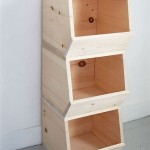Creating Maximum Storage Space In Your Garage Ceiling
Garages often become repositories for items that lack a designated space within the home. Over time, this can lead to a cluttered and inefficient garage environment. One often underutilized area is the garage ceiling. Leveraging this vertical space can significantly expand storage capacity and free up valuable floor space. This article outlines strategies for maximizing storage space in a garage ceiling, focusing on practical solutions and considerations for safety and accessibility.
Assessing Your Storage Needs and Garage Structure
Before commencing any installation, it is crucial to thoroughly assess the items intended for storage and evaluate the structural integrity of the garage ceiling. A careful assessment will prevent overloading the ceiling and ensures the chosen storage system is appropriate for the specific garage environment.
Begin by taking an inventory of items planned for ceiling storage. Categorize these items by weight, size, and frequency of access. Lighter, less frequently used items are ideal candidates for overhead storage. Heavy or frequently needed items are best stored elsewhere for safety and convenience. Furthermore, consider seasonal items like holiday decorations, camping gear, or sporting equipment that occupy valuable floor space during off-seasons.
Next, perform a comprehensive inspection of the garage ceiling structure. Identify the joists and their spacing. Joists are the horizontal structural members that support the ceiling. Standard spacing is typically 16 or 24 inches on center. Locate the joists using a stud finder, or by tapping on the ceiling and listening for a solid sound, indicating the presence of a joist. Note the direction in which the joists run. This will dictate the orientation of the storage system's mounting hardware.
Evaluate the material composition of the joists. Are they made of wood, metal, or engineered lumber? Wood joists are common in older homes, while metal or engineered lumber may be found in newer constructions. The type of material will influence the selection of appropriate fasteners. Ensure that the chosen fasteners are rated for the load capacity of the storage system and the joist material.
Furthermore, check for any existing wiring, plumbing, or ductwork running along the ceiling. These obstructions must be avoided during installation. If such utilities are present, consult with a qualified professional to determine the safest and most effective way to work around them. It may be necessary to relocate or reroute these utilities before proceeding.
Determine the maximum weight capacity of the garage ceiling. Consult with a building inspector or structural engineer if uncertain. Overloading the ceiling can lead to structural damage or even collapse. Adhere to the manufacturer's weight recommendations for any storage system installed. Distribute the weight evenly across the storage area to minimize stress on individual joists.
Finally, measure the available vertical space. Consider the height of vehicles parked in the garage and ensure ample clearance between the vehicles and the storage system. Leave sufficient headroom for safe and comfortable movement within the garage. A minimum of seven feet is generally recommended.
Selecting the Appropriate Ceiling Storage System
A variety of ceiling storage systems are available, each offering unique advantages and disadvantages. The choice of system depends on factors such as budget, storage needs, and personal preferences. Careful consideration is essential to ensure the selected system provides safe and efficient storage.
Overhead storage racks are a popular option. These systems consist of adjustable metal frames suspended from the ceiling, providing a platform for storing boxes, bins, and other items. Overhead racks offer a high weight capacity and can be customized to fit different garage sizes. They can be adjusted to accommodate taller items.
Consider the weight capacity of the racks. Choose racks rated for the intended load. Look for racks with a durable powder-coated finish to resist rust and corrosion. Opt for adjustable racks to maximize space utilization. Racks with safety features such as wire mesh decking prevent items from falling.
Ceiling-mounted hoists are suitable for storing bulky or heavy items such as bicycles, kayaks, or ladders. These systems utilize a pulley system to lift and lower items, making them easily accessible. Hoists are an excellent choice for individuals with limited strength or mobility.
Select hoists with a sufficient weight capacity for the intended items. Ensure the hoist is securely mounted to the ceiling joists. Look for hoists with safety features like automatic braking mechanisms to prevent accidental drops. Consider electric hoists for added convenience.
Attic lifts provide access to attic space above the garage. These systems consist of a platform that raises and lowers using a motor. Attic lifts are ideal for storing seasonal items or infrequently used belongings in additional storage areas. These are generally professional installation items, due to complexity and electrical requirements.
Consider the limitations on the amount of weight that can be safely stored. Ensure the attic floor can support the weight of items stored. Work with professionals to properly install and obtain necessary permits.
DIY ceiling-mounted shelving can be constructed from lumber and hardware. This option offers a cost-effective solution for storing smaller items. DIY shelving allows for customization to fit specific needs and available space. However, it requires careful planning and execution to ensure structural integrity.
Use high-quality lumber for the shelves and supports. Securely fasten the shelving to the ceiling joists. Ensure the shelves are level and evenly spaced. Consider adding a lip or guardrail to prevent items from falling. All elements must meet or exceed construction safety standards.
Regardless of the chosen storage system, prioritize safety. Follow the manufacturer's instructions carefully. Use appropriate safety gear, such as eye protection and gloves, during installation. Have a helper assist with lifting and securing heavy items.
Implementing Best Practices for Safety and Accessibility
Once the ceiling storage system is installed, it is essential to implement best practices to ensure safety and accessibility. Proper organization and maintenance will enhance the functionality of the storage system and prevent accidents.
Clearly label all storage containers. This allows for quick and easy identification of items without having to rummage through multiple containers. Use permanent markers or label makers for clear and durable labels. Consider using color-coded labels to further categorize items. This is especially helpful during holiday decorating or seasonal sports activities.
Store items in transparent containers. This allows for visual identification of contents without opening the containers. Transparent containers are particularly useful for storing items that are similar in appearance. Alternatively, use clear plastic bags to store smaller items within opaque containers.
Distribute weight evenly across the storage system. Avoid concentrating heavy items in one area. Distribute the weight across multiple joists to minimize stress on individual structural members. Periodically inspect the storage system for signs of sagging or stress.
Use a sturdy ladder or step stool to access items stored on the ceiling. Never stand on unstable surfaces or reach for items beyond your reach. Position the ladder on a level surface and ensure it is securely in place. Have a helper hold the ladder for added stability. If the item is too heavy to retrieve safely, ask for help.
Implement a regular maintenance schedule. Periodically inspect the storage system for loose fasteners, damaged components, or signs of wear and tear. Tighten any loose fasteners and replace any damaged components promptly. Clean the storage system regularly to prevent the accumulation of dust and debris. Regular maintenance will extend the lifespan of the storage system and ensure its continued safety and functionality.
Consider a pulley system for heavy items. A pulley system can assist with lifting and lowering heavy items, reducing the risk of injury. Attach the pulley system to a sturdy point on the ceiling and ensure it is properly secured. Follow the manufacturer's instructions for operating the pulley system.
Store flammable or hazardous materials in designated areas. Keep flammable liquids, chemicals, and other hazardous materials away from heat sources and ignition sources. Store these materials in tightly sealed containers and label them clearly. Consider installing a flammable liquid storage cabinet to contain spills and prevent fires.
Make use of lighting. Ensure adequate lighting is available in the garage to improve visibility and safety. Install additional light fixtures near the ceiling storage area to illuminate the contents of the containers. Use LED lights for energy efficiency and long life.
By adhering to these best practices, individuals can create a safe, organized, and accessible ceiling storage system in their garage. This will maximize storage capacity and free up valuable floor space, leading to a more functional and enjoyable garage environment.

Diy Garage Ceiling Storage And Wall Organization Angela Marie Made

How To Diy A Ceiling Garage Storage System The Family Handyman

Diy Garage Ceiling Storage And Wall Organization Angela Marie Made

Diy Garage Ceiling Storage And Wall Organization Angela Marie Made

Overhead Storage Loft Woodworking Project Woodsmith Plans

Are Garage Ceiling Storage Racks Safe

Wasted Space High Garage Storage Shelves 8 Steps With Pictures Instructables

Diy Garage Storage Ceiling Mounted Shelves Giveaway

Garage Ceiling Storage Ideas By Smart Racks In Orlando

Wasted Space High Garage Storage Shelves 8 Steps With Pictures Instructables
Related Posts








